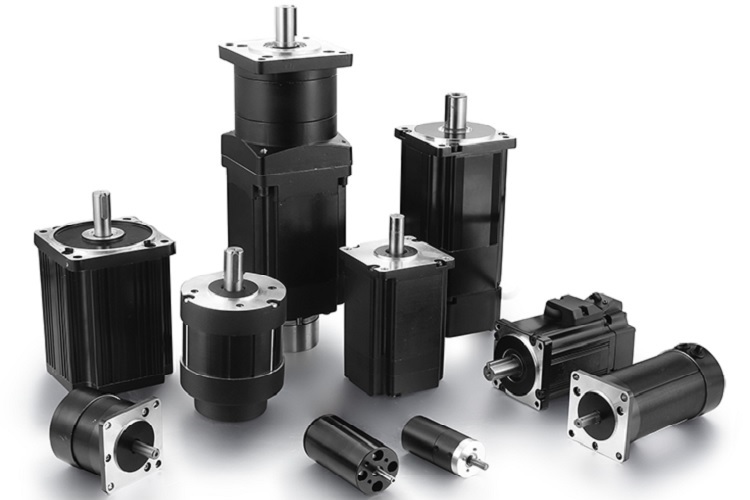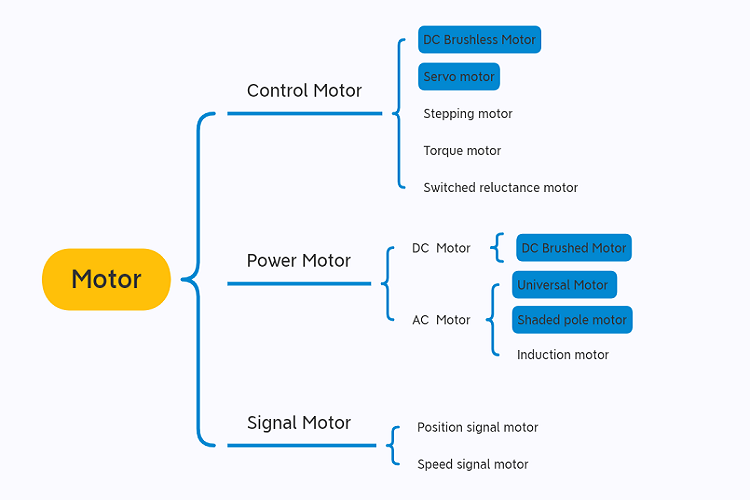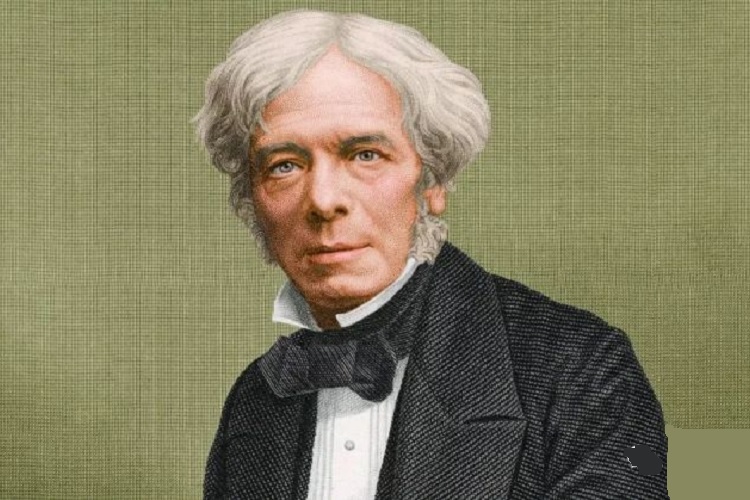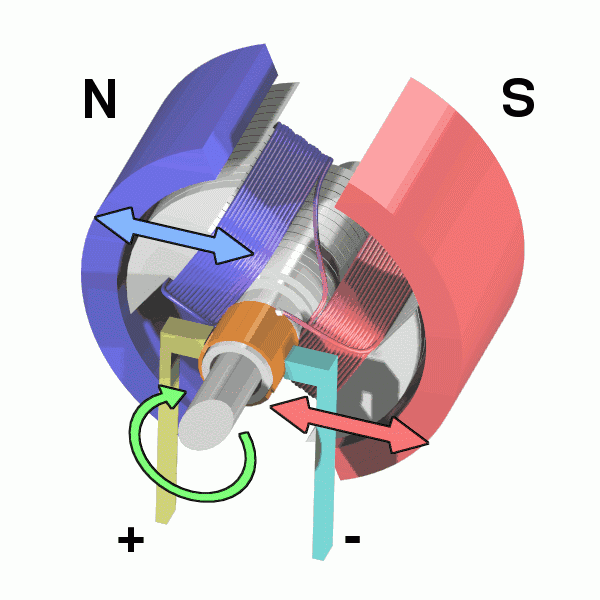The motor, the motor in our daily life, can be traced back to the 19th century. The emergence of the motor is largely due to the discovery of the law of electromagnetic induction and the law of electromagnetic force. Motor, generator, transformer, and control motor are all machines based on the principle of electromagnetic induction.

As electromagnetic equipment that converts or transmits electric energy, the key is to generate driving torque. As the key equipment for energy conversion of electromechanical engineering, the motor is the basic component of electrical transmission. It has a wide range of uses, many product types, and complex specifications and models. Such product characteristics determine that the market concentration of the industrial chain is not high and the enterprise involves many subdivided fields, There is no significant regularity, regional and periodic characteristics.
The wide application of motors in modern life also promotes the continuous evolution of motors. According to different applications, motors will have different designs and driving modes, leading to the obvious increase of motor models and components.
We simply classify the motors according to their uses and characteristics.

Now that the motor is widely used, what kind of development history has the motor gone through? Let's go back to the origin and talk about the past and present life of the motor.
01- Theoretical Preparation And Exploration
On July 21, 1820, professor and physicist Auster of Copenhagen University in Denmark discovered the "magnetic effect of current", established electromagnetism's mutual connection, and gave birth to electromagnetism.
In 1821, the famous British physicist Faraday made the first model of the experimental motor. In 1822, Faraday proved that electricity can work and move, and mankind entered the electrical age. With the successful invention of the first practical generator, the second industrial revolution began.
Subsequently, Faraday discovered the phenomenon of electromagnetic induction in 1831. In addition, he also discovered the law of electrolysis and conducted a large number of fruitful studies on the phenomenon of gas discharge, which prepared the conditions for the later discovery of roentgen rays, natural radioactivity, and isotopes, and laid the foundation for the development of modern physics. In the study of electromagnetism, he created new words such as diamagnetism, paramagnetism, dielectric, force line, anion, and cation, and put forward the concept of "field".

Faraday made the first experimental motor, generator, and transformer. He studied the liquefaction, optics, and electrochemistry of gas. He is truly the father of electricity and the father of alternating current.

In 1870, the Belgian personality ram invented the DC generator. In design, the DC generator and motor are very similar. Later, gram proved that when a current was input to a DC engine, its rotor would rotate like a motor. Therefore, this gram-type motor is manufactured in large quantities, and the efficiency is significantly improved.
In 1888, American inventor Tesla invented the AC motor according to the principle of electromagnetic induction. The motor has the advantages of simple structure, AC, no rectification, and no spark. It is widely used in industrial household appliances. AC motors usually use a three-phase AC power supply.
The motor is mainly composed of rotor, stator, brush, end cover, bearing, and other components. The stator is composed of the stator core, base, wire wrapped winding, and other structural parts fixing these parts. The rotor is composed of a rotor magnetic pole, rotor iron core, slip ring, rotating shaft, fan, and other components. The generator current is generated by connecting and assembling the stator and rotor of the generator through the bearing, base, and end cover to make the rotor rotate in the stator. A certain excitation current is connected through the slip ring to make the rotor become a rotating magnetic field. The stator coil moves to cut the magnetic line of force, resulting in induced potential. It is led out through the wiring terminal and connected to the circuit, which generates a current. Because there is an open circuit at the connection between the brush and the rotor, the rotor rotates in a certain direction to produce alternating current, which is referred to as alternating current for short.

02 -Motor Development Stage
The first part of the development of the DC motor can be roughly divided into the stage of using a permanent magnet as a magnetic field, the stage of using an electromagnet as a magnetic pole, and the stage of changing excitation mode. Because the use of the motor must be provided by the DC generator, the excitation technology is a key technology for the development of the DC motor in these three development stages. It provides technical and theoretical support for the generator. The development of the motor advances with the development of the generator, which makes the motor enter a new application stage.
In 1854, the Holt Werner brothers of Denmark applied for a patent for a self-excited generator. Since then, scientists have invented a series of excitation self-excitation motors and self parallel excitation generators, which has greatly changed the performance of DC generators and made the development of DC motors enter a new stage.
The improvement stage of the DC motor was concentrated in the 1960s and 1970s. At this stage, toothed armature, ring armature, and drum rotor were invented successively. The new technology greatly reduced the production cost of motor, and the motor entered the era of practical application.
With the development of DC power generation technology, the maximum voltage generated by DC generator is 57.6 kV, the maximum output power is 4650 kW, and the transmission distance can reach 180 km. However, this soon reached the technical limit, and the AC motor began to receive attention.
In 1889, the Russian Engineer Dolev dubolowski invented the squirrel cage three-phase motor, which is the first practical three-phase AC motor. So far, the motor has developed to the stage of industrial application.
03-Development Trend Of Motor
At present, China's motor industry has made remarkable progress after more than 40 years of development, especially after the reform and opening up. As one of the indispensable components of mechanical equipment, under the background of reducing energy consumption in the world, high-efficiency and energy-saving motors have become the consensus of the development of the global motor industry.
The future development trend of the motor is as follows:
1). Under the framework of energy conservation and emission reduction, high-efficiency, and the energy-saving motor is the inevitable direction of the development of the motor industry, and high-efficiency and the energy-saving motors will drive the rapid development of the industrial chain. High efficiency and energy-saving motors will push China's industry to a new height and help achieve the goal of made in China 2025. As far as the industry is concerned, the small motor manufacturing industry will develop in the direction of scale, standardization, and automation, while the large and medium-sized motor manufacturing industry will develop in the direction of increasing single machine capacity, requiring specialization, diversification, and customization.
2). The motor forms are more diverse, and the motor is gradually developing in the direction of specificity. China's current industrial development requirements and people's requirements for quality of life make the demand for motors diverse. At the same time, the situation that the same motor was used in different load types and different use occasions in the past will be broken, and it is more inclined to special scenarios.
3). The structure of the motor will be more compact and fine. In the future, the development of smart cities and industrial automation will significantly increase the demand for intelligent robots and automation equipment. It is expected that intelligent robots and automation equipment will develop on a large scale in the future. Its operation inevitably needs the drive of the motor, and the requirements of these fine operations for the motor will also tend to be small and exquisite.

From household appliances to industrial appliances, motors are an indispensable part of the objects needed in national life. Therefore, the importance of motor performance for product use and product quality is self-evident. At the same time, it also indirectly affects our quality of life.
 BACK
BACK
In February 2025, BG Motor ushered in the traditional Lantern Festival celebrati…
The new year has begun, and BG Motor is officially back to work! After a refresh…
Dear Customers, Partners and Employees,On the occasion of the Spring Festival, B…
BG Motor, Ningbo, China, January 9, 2025 – As the festivities of Christmas and N…
At this juncture of saying goodbye to the old and welcoming the new, all BG Moto…
Originally commemorated the birth of Jesus, Christmas has become a powerful cult…